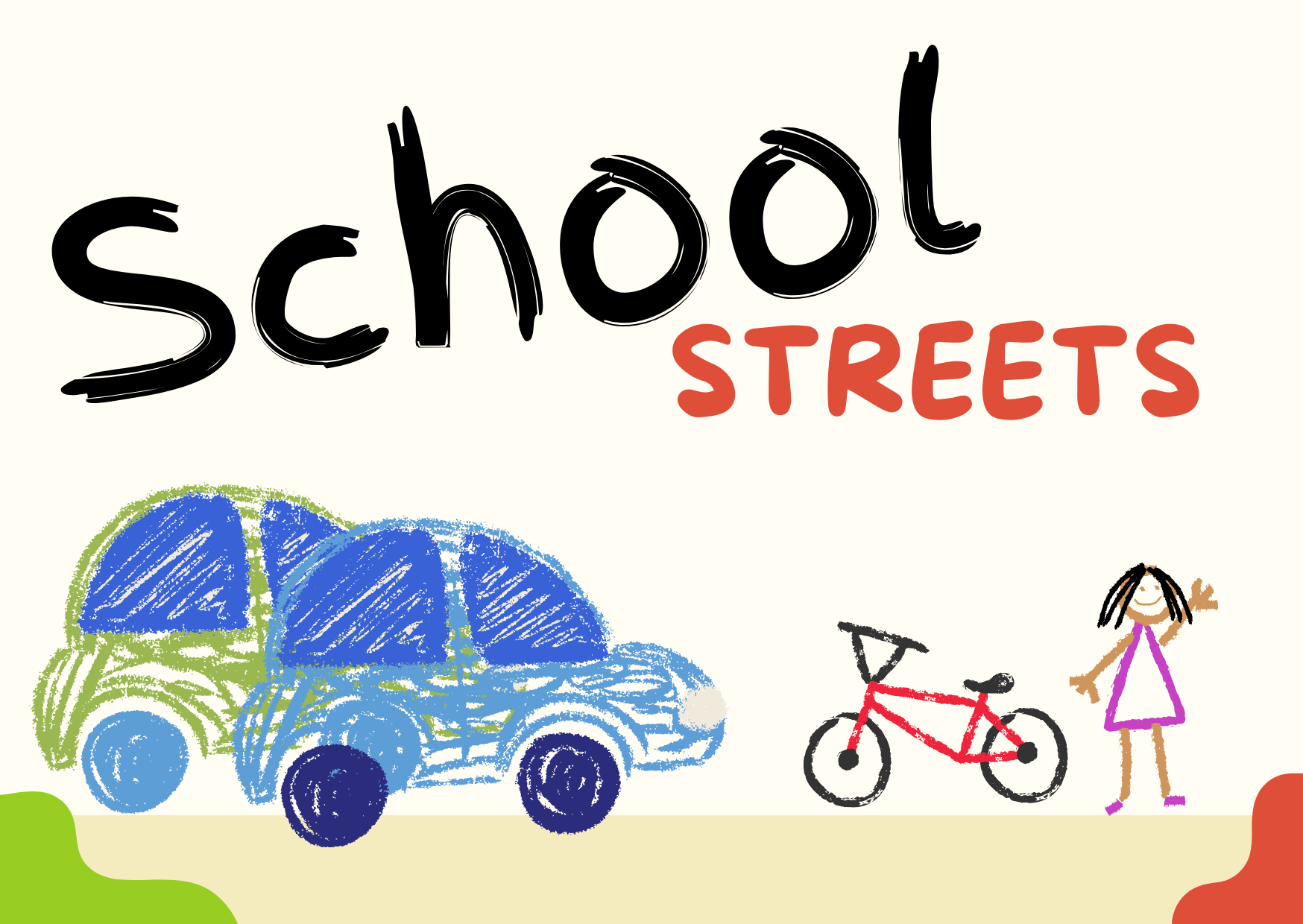One of our priorities for 2024/25 is the School Streets programme in Newcastle. We’ll expand more in later posts about what has happened in the city to date, but first:
What exactly is a School Street?
Simply put, a School Street is an initiative to impose part-time restrictions on motor vehicles in the streets outside schools during drop-off and pick-up times.
Why the need for School Streets?
Car ownership and traffic levels have steadily increased in Great Britain with an almost 45% increase in car ownership in the past 25 years and this increase has had a corresponding impact on the traffic outside schools during drop off and collections times.
There have been concerns about road safety due to the increased congestion, but schools have also been worried about pollution caused by increased traffic and idling vehicles. We also know that children should have at least 60 minutes of moderate to vigorous physical activity every day, and that active travel to and from school can be a key part of meeting that target.
Reducing motor traffic around schools during drop-off and pick-up times can increases safety, reduces pollution and encourages active travel to and from school.
How long have School Streets been around?
The first School Street originated with in Bolzano, Northern Italy, in 1989 but it was almost 25 years before one of the first School Streets in the UK was implemented in Haddington, East Lothian in 2014 – a School Street that is still in place.
Support for the idea of School Streets began to grow, particularly from groups like Mums for Lungs, Sustrans and Friends of the Earth. Then in 2019 Sustrans worked with Playing Out to as part of their The Big Pedal campaign (now renamed The Big Walk and Wheel) to support 40 schools to close the streets directly outside to support children traveling actively to school.
Starting the following year, during the Covid pandemic, a rapid rethink of how we use our street space meant suddenly a large number of schemes were implemented both within the UK and across the world. Within two years, the number of countries with school streets doubled and in London alone, the number increased by five times from 80 in 2019 to 511 as of March 2022. Sustrans itself has now collaborated on over 500 schemes.
What will happen when a School Street is implemented?
In Newcastle, restrictions are trialled using an ETRO or Experimental Traffic Regulation Order. This is a form of traffic order which allows authorities to impose changes without a consultation prior to installation, but a statutory six month consultation must take place and a decision must be made within 18 months or the traffic order lapses and the changes must be reverted. These ETROs had been used successfully during Covid to allow rapid reallocation of road space to allow social distancing and active travel as well as offering residents to “try before you buy” – actually experiencing any changes before making a decision.
How is it enforced?
This is the hard part. In Newcastle to date School Streets have been implemented using a signage-only approach, with no volunteer stewards or physical barriers. To launch these it has been absolutely crucial to communicate with as many people as possible to build support before implementation as there’s nothing and no one physically blocking motor traffic during restriction hours so compliance is reliant on driver’s sticking to the rules.
This can work during the initial phases of the scheme, but without additional work and support, compliance can trail off over time.
There are many options available including using volunteers, camera enforcement or redesigning the streetspace to reflect the need for a calmer, safer environment outside the school. At the moment none of these are used in Newcastle.
Want to know more about School Streets? http://schoolstreets.org.uk/ or more detail about the technical side of things https://therantyhighwayman.blogspot.com/2018/11/school-streets-basics.html

